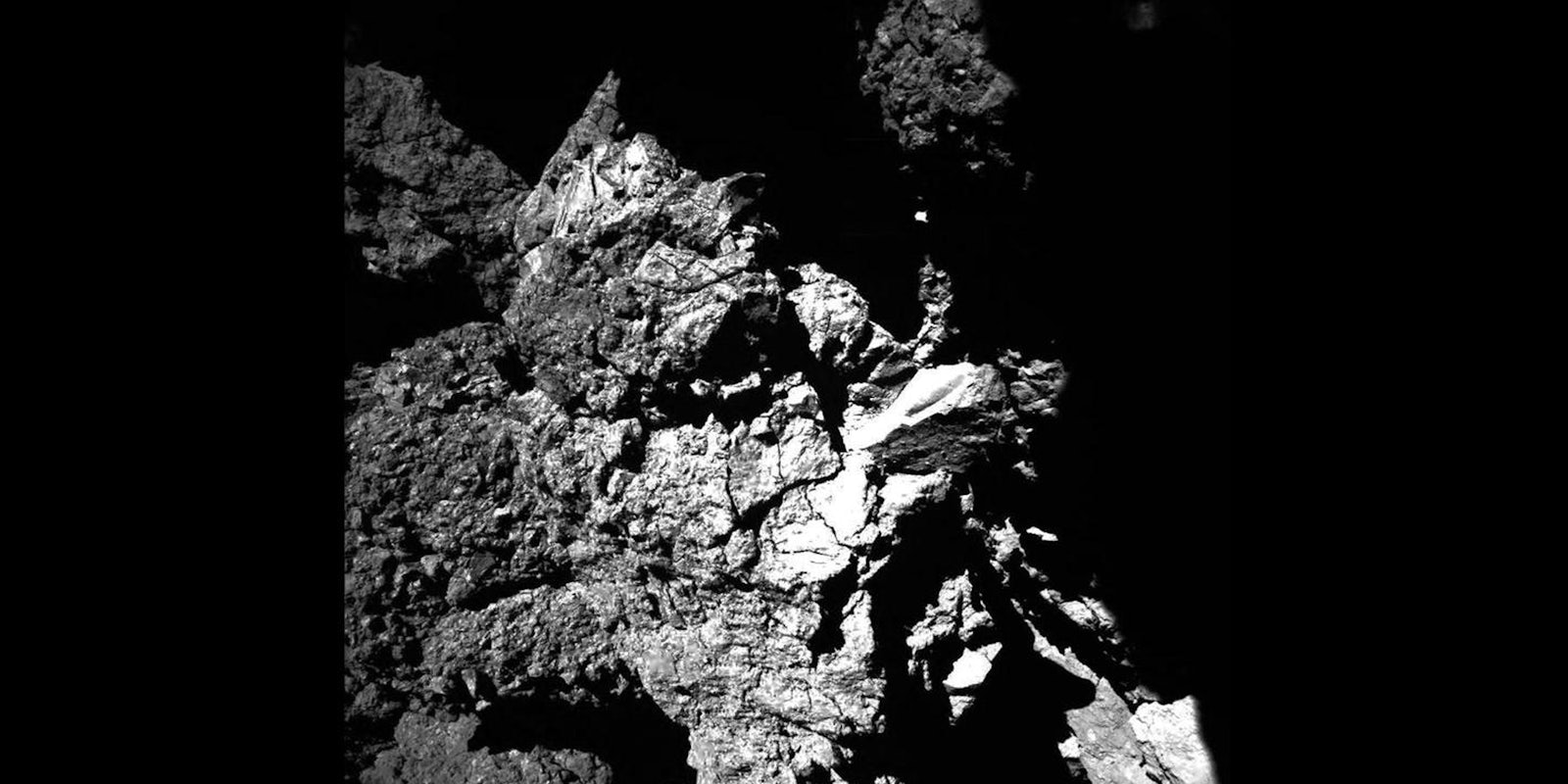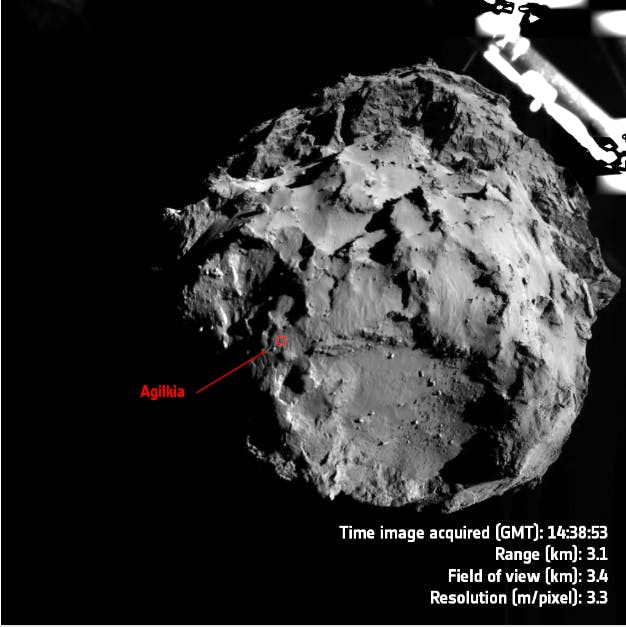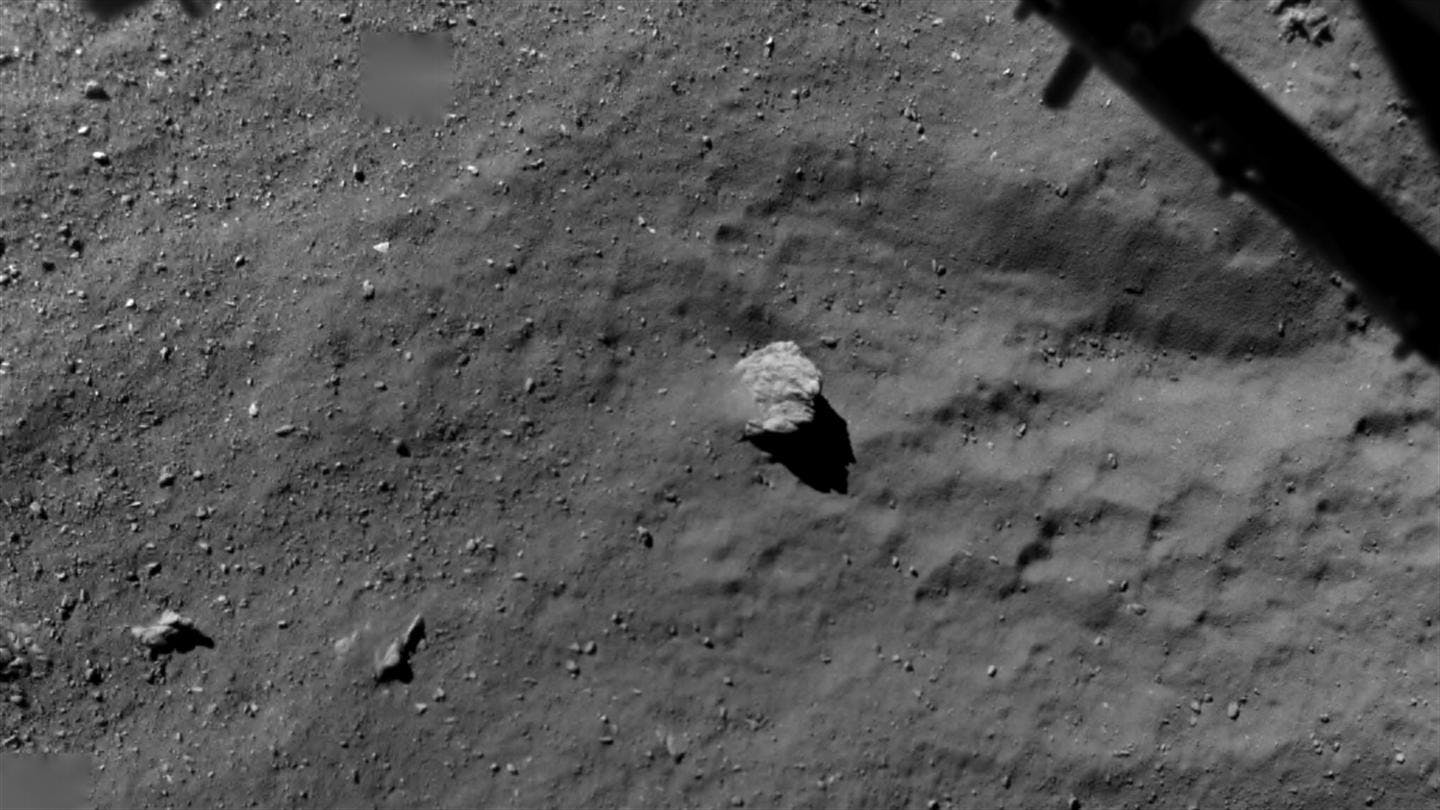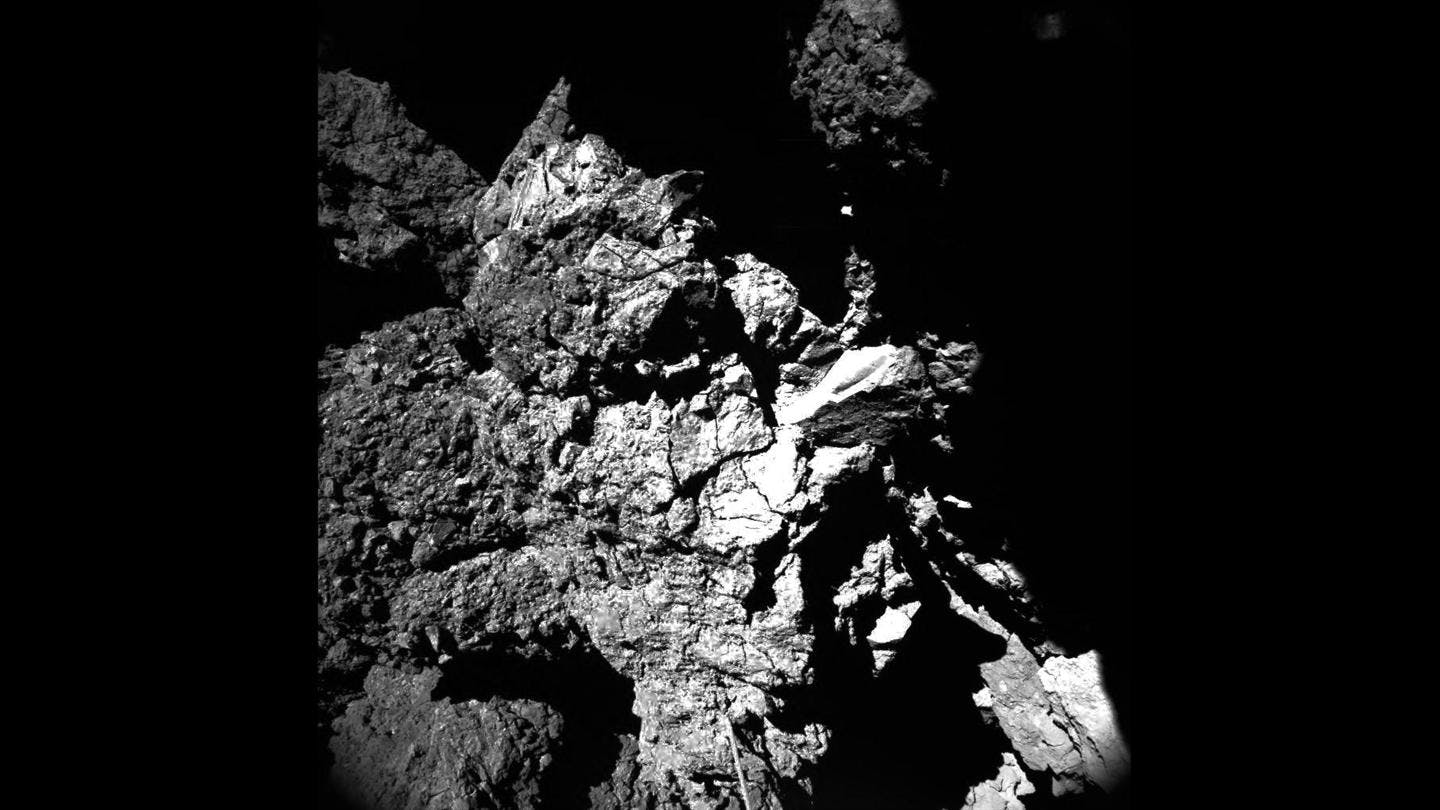A groundbreaking discovery by the Philae comet lander may be a precursor to proving that extraterrestrial life in the universe has been zooming right past us all along.
When Philae dropped to the surface of passing traveler 67P/Churyumov–Gerasimenko back in November, it didn’t just immediately settle in to hibernate in a shadow for seven months. It spent about 60 hours returning data to scientists, including the discovery of really weird water and data on a number of surface samples it collected as it bounced to its final landing point.
Scientists released their initial findings from Philae’s November data haul on Thursday in the journal Science.
I’m excited to announce that my scientists have published the results of all my hard work on #67P last November :-) http://t.co/gAyPyzPf2b
— Philae Lander (@Philae2014) July 30, 2015
So what did Philae find? Rocks, mostly, according to the official findings release—specifically, “a surface with coarse debris, pebbles and rocks with dimensions ranging from a few centimetres up to five metres.”
When Philae attempted to land in November, so of its landing gear failed, which caused the probe to rebound from the original landing site and hit several other surfaces before landing in the shadow of a cliff. The comet lander survived the ordeal in good enough shape to send us back photos. A camera attached to the bottom of the comet lander took snapshots every seven seconds for the duration of its descent, so we now have stunning views of what a comet’s surface is like.
Since it awakened in June, Philae has been in intermittent communication with the Rosetta space probe, which is orbiting the comet so that it can relay Philae’s findings back to the European Space Agency. Those communications haven’t been long enough to continue its research, but scientists are still uncovering lots of interesting new findings from the initial landing.
The biggest of them so far: Philae found the building blocks for life as we know it, in the form of “organic molecules, which had thus far not been found on or in the vicinity of comets.”
The discovery of organic molecules on the comet strongly supports the ESA’s announcement earlier this month that there may actually be microscopic organisms living in water just below the comet’s frozen surface. The probe’s analysis tool has identified 16 separate organic molecular species, including some never found on a comet before, which are “prebiotic,” meaning they contribute to fundamental parts of life here on Earth. Many of these molecules contain carbon, and many contribute to the creation of amino acids and other DNA ingredients like ribose.
Though the actual existence of life beneath the surface of the comet is not yet confirmed, the ability to study the molecular structure of compounds on the comet will be invaluable to scientists trying to understand the origins of life. The news also comes shortly after NASA‘s announcement of over 500 new potential exoplanets on which we can seek life—including one dubbed “Earth 2.0.”
Though we won’t be traveling to any of these locations or making them our home any time soon, it’s definitely a good time to be a space explorer. Even if Comet 67P doesn’t provide proof that life outside our own planet exists, at this rate another planetary body soon will.
And that’s good news for the whole universe.
Photo via ESA/Rosetta/Philae/ROLIS/DLR





